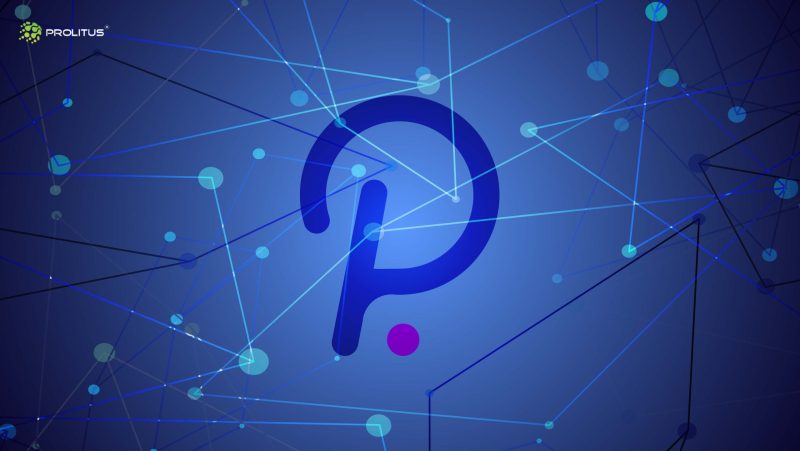Polkadot, or if it may be so bold to call it “The Ethereum Killer,” is the brainchild of ex-CTO and co-founder Gavin Wood along with Robert Habermeier and Peter Czaban and is emerging to be the next big thing in the world of cryptocurrency networks.
If you’re one of the crypto-enthusiasts and Polkadot has piqued your interest lately, then this article is the one-stop shop for everything there is to know about the Polkadot network.
What is Polkadot?
Before we dive into the vast world of Polkadot, it is crucial that you understand what exactly Polkadot is.
Well, it is simply a network that joins the dots to all the available networks or a multi-chain network. Its motive is to create a neat framework of complicated and costly crypto-mining processes.
Polkadot’s Value: Then V/S Now
Polkadot, on its initial coin offering(ICO), was valued nary at $0.29USD with 2.24 million tokens offered.
With a whopping value of USD 9.42 today, Polkadot has made a major leap in its value from its initial coin offering(ICO) held in October 2017.
How is Polkadot Interoperable?
Before we discuss Polkadot’s interoperability, you need to understand blockchain interoperability. Blockchain interoperability permits various blockchain protocols to communicate with each other actively.
As a result, various chains can communicate with each other and exchange data, thus, making it preferable to use blockchain networks.
Currently, no blockchain protocol has been able to crack blockchain interoperability wherein a blockchain layer could interact outside a chain.
But the network that has come closest to it is the Polkadot interoperability which is built around the idea of creating smaller sub-chains that will be interconnected to each other and be administered under a single blockchain on the top.
The reason why Polkadot’s interoperability is its most promising feature is its ability to create a heterogenous blockchain. It allows all of its blockchains to create a network within themselves and operate seamlessly, thus enabling the exchange and processing of transactions and data with utmost security.
Difference between Polkadot and Other Blockchains
Polkadot recently completed its 2nd anniversary in May 2022 and has established itself as an up-and-coming blockchain in an ecosystem that is reigned by Bitcoin and Ethereum.
Here is how Polkadot is beating various other blockchains:
-
Polkadot V/s Kusama
Kusama is a Polkadot testing platform where developers have the freedom to experiment with ideas before showcasing them on Polkadot.
Despite being a cheap platform four times faster than Polkadot, it is left behind in the race due to its instability and security issues.
-
Polkadot V/s Bitcoin
One of the main reasons why Polkadot challenges the monopoly of Bitcoin is its scaling and interoperability limitations. Polkadot is a multi-chain network that allows the exchange of data, tokens, and communication across various blockchains.
-
Polkadot V/s Ethereum
Although being almost the same in their approach and the commonality of being founded by Gavin Wood, Polkadot defeats Ethereum due to the inability of Ethereum to develop a clean network and high gas fees.
-
Polkadot V/s Cardano
Cardano is known to be a 3rd generation blockchain platform that is the first to be founded on peer-based research and developed through evidence-based methods which concentrate on DApp development.
On the other hand, Polkadot is the ultimate package as it is a multi-chain ecosystem, cryptocurrency, and blockchain all at the same time!
It not only achieves cross-chain interoperability but also aims to power fuelling next-gen DApp development.
How does the Polkadot network function?
The Polkadot network functions with the help of its unique architecture, which constitutes the following:
-
Relay Chain
The relay chain is better known as the heart of the Polkadot network. It enables all the blockchains to unite with each other. Its role is to administer the system and build coordination among its network, thus making it a scalable and interoperable network.
It is also responsible for ensuring security in its network.
-
Parachains
Built on Substrate, they enable a fast and easy connection to the relay chain. Since these are parallel, they enhance the scalability of the network
-
Bridges
Like any other bridge, the Polkadot Bridge helps in building a connection between two networks. These enable interaction even with those blockchains that are not natively compatible with Polkadot.
-
Validators
These are the nodes that verify the information of a given para chain block and help in adding new blocks to the relay and para chains.
-
Nominators
Nominators bond with validators to get an active validator set and help in producing blocks for the chain.
The nominators are rewarded with staking rewards from the validators in return.
-
Collators
Their role is to collect transactions from the parachains, which helps in maintaining the parachains.
Why is DOT used in the Polkadot network?
DOT equals the native token for this network. It carries out 3 main functions, which are as follows:
-
Network Governance
Network governance includes determining the network fee, adding parachains, etc.; only those entitled to be called DOT holders can participate in the network governance.
-
Bonding DOT to create parachains
DOT holders are supposed to get their DOTs locked through a process called DOT bonding to add new parachains. It is done to provide proof of stake.
-
Network Operation
Polkadot lays out a mechanism for its network operation that includes the DOT holders putting their DOTs at risk, also referred to as staking.
Staking helps discourage malpractices in the network; the DOT token holders are awarded for their excellent transactions and lose their stakes as holders for every faulty transaction they make.
What are the other features of the Polkadot?
-
Heterogeneity
One of the unique features that set Polkadot apart is the fact that it is simply a blockchain but still more than just a plain blockchain, as it connects one blockchain with the other and creates a network.
This network is created with the help of a relay chain and parachains. This helps in creating a decentralizing paradigm and achieving heterogeneity.
-
Scalability
Isolated blockchains tend only to process limited traffic, thus causing the system to be messy and congested. But this is not the case with Polkadot, as it is a muti-chain network and includes parachains that enable parallel processing, thus increasing scalability to a multifold.
-
Easy Innovation
Polkadot makes it highly convenient for its users to create custom blockchains. It merely takes minutes, and one chain can be connected to the other. This would have been impossible to achieve without Polkadot’s interoperability and security.
-
User Governance
Polkadot’s governance is autonomous. This means that its stakeholders have a say in the governance of the system, a feature that was found to be lacking in many blockchains that came before Polkadot.
Polkadot is considered to be one of the first of its kind to accommodate user governance into its ecosystem.
-
United Security
Since Polkadot’s security is united in nature, the blockchains can operate independently and interact with each other. Not only this but since all projects building on Polkadot are pooling resources, it reduces the cost of security without compromising on it. Hence, it is a win-win situation for everyone involved in the process.
-
Forkless and future-ready
Unlike other blockchain networks, Polkadot does not require forking to fix bugs and update blockchains. It is programmed to upgrade itself and adapt to changes according to emerging technologies.
-
Extra-key security
One of Polkadot’s less talked about attributes is its implications on various levels of public and private critical security. A user creates two accounts: a stash account, which holds bulk DOT tokens, and a controller account, which is a secondary account to take part in staking, governance, etc.
In case the controller account is compromised, the user can create a new one with their stash account without losing the funds.
How to Mint Polkadot?
There have been talks about a token-minting system being introduced to the Polkadot system. It is said to be a superior version of Ethereum’s ERC-20 standard, which launched heavy token sales.
The framework that will overlook the transfer and issuance of the tokens will come to be known as Polimec. This framework will be launched by team KILT.
The creation of Polemic will not only attract more people to Polkadot’s parachains but will cater to a large number of DOT users who would find ways to invent these back into the community and help it grow.
What kind of different services does Prolitus offer for the Polkadot network?
Among our vast catalogue of offerings, we here at Prolitus also offer a variety of services for the Polkadot network, including Smart Contract Development, Parachain Development, Exchange Platform, NFT Marketplaces, Wallet, and Node Development, and dApps Development.
Polkadot has undoubtedly been one of the fastest-growing systems in a very short span of time and has received the title of the fourth biggest cryptocurrency.
What makes Polkadot a cut above the rest is its unique features, the platform not only focuses on interoperability, security, and scalability but also on its governance.
But we cannot undermine the monopoly that Bitcoin and Ethereum have exercised due to their larger time span against Polkadot, which is still new to the market.
All these challenges and their rapid recognition among various developers, entrepreneurs, and users together generate curiosity about what the future holds for Polkadot.
We’d be happy to provide you with more sustainable solutions. Do let us know what all topics you’d like for us to discuss by writing to us via our mail.





